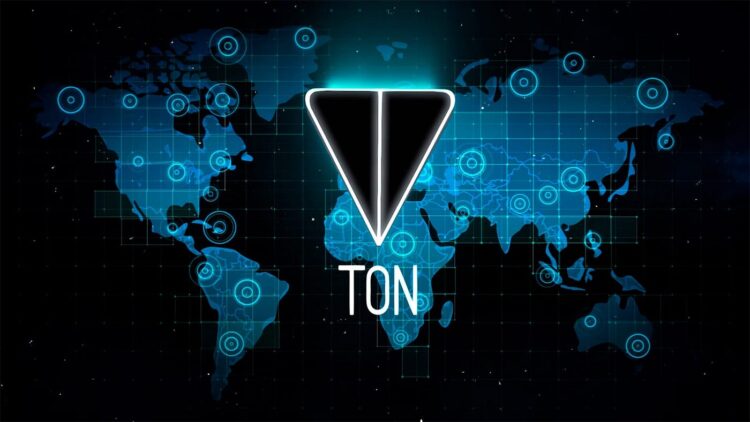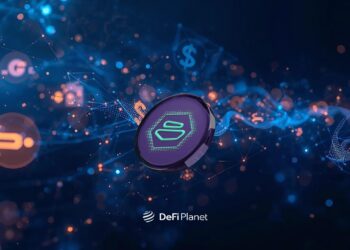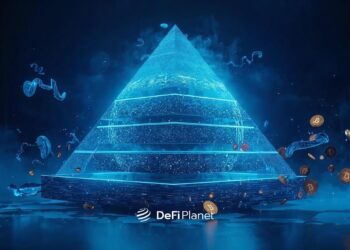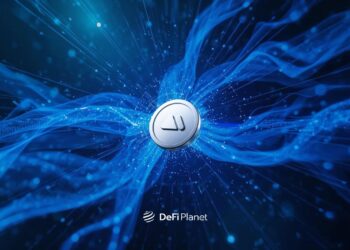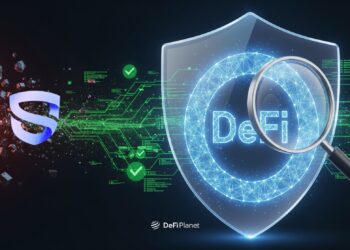The Open Network (TON) has an unusual origin. It began not as a grassroots crypto project but as an ambitious side project by Telegram’s founders in 2018. Originally known as the Telegram Open Network, it aimed to solve key blockchain issues: scalability, transaction costs, and network speed. The vision was bold—create a fast, secure, and scalable decentralized infrastructure that could support payments, smart contracts, decentralized apps (dApps), and more.
However, in 2020, the U.S. Securities and Exchange Commission (SEC) raised a regulatory concern. It cited concerns about unregistered securities, which forced Telegram to abandon the project. That could’ve been the end of TON.
Instead, a decentralized community of developers took over. Now operating under the TON Foundation, they rebranded it as “The Open Network” and have since made remarkable progress. Today, TON supports a wide range of decentralized services, including DeFi applications, file storage, Web3 gaming, NFTs, and more.
This review examines how TON operates, the problems it addresses, its limitations, and what its future may hold within the broader blockchain ecosystem.
How TON Works
TON is built on a unique architecture known as a “blockchain of blockchains.” At its core is a Proof-of-Stake (PoS) consensus mechanism, which validates transactions and secures the network through staking. TON also supports smart contracts.
Three core innovations drive TON’s performance:
- Adaptive Infinite Sharding allows the network to automatically split into multiple shards (or chains) that process transactions in parallel. This dynamic approach ensures TON can scale efficiently without slowing down.
- Asynchronous Message Delivery enables different parts of the blockchain to communicate with each other without waiting for one another. It eliminates bottlenecks and supports real-time processing.
- Hypercube Routing speeds up data transmission between nodes by finding the most efficient path across the network. This reduces latency and increases reliability.
These features enable TON to process over 100,000 transactions per second (TPS), all while keeping transaction fees extremely low—something even Ethereum and Solana continue to struggle with at scale.
Toncoin (TON) is the native token of the ecosystem, playing a central role in maintaining its operations. It supports several critical functions. It is used to pay transaction fees, ensuring smooth operations across the blockchain, and plays a vital role in the network’s security. In its PoS system, validators stake Toncoin to validate transactions and secure the blockchain.
Toncoin unlocks access to dApps, smart contracts, and other advanced features within the TON ecosystem.
Beyond Transactions: TON’s Decentralized Services
TON is more than just a transactional network; it also provides essential services, including:
- TON Storage: A decentralized file storage protocol that encrypts and replicates files across nodes, ensuring privacy, durability, and resistance to censorship. This service is ideal for hosting websites or protecting sensitive data.
- TON Proxy: This privacy-focused tool masks users’ IP addresses, helping them bypass censorship and making it particularly valuable in regions with restricted internet access or heavy surveillance.
- TON Portfel: A portfolio management solution to help users manage their digital assets effectively.
The development and evolution of TON are driven by a vibrant community and the efforts of the TON Foundation. This decentralized group fosters innovation by offering grants, hosting hackathons, and partnering with developers worldwide to build new applications. These tools showcase the community’s ability to create functional and impactful technologies.
TON’s Current Use Cases
Web3 Gaming and Play-to-Earn
TON’s high speed and low fees make it a natural fit for Web3 gaming. Players can buy, sell, and trade in-game assets with true digital ownership, no centralized game server required.
Developers can seamlessly integrate NFTs, crypto rewards, and real-time trades into gameplay without encountering high gas fees or slow transaction times. For example, in-game skins or collectibles can be listed on open marketplaces, enabling a secondary economy that benefits both players and creators.
The widely successful Hamster Kombat and similar projects in 2024 demonstrated this.
READ MORE: Hamster Kombat: Revolutionizing Web3 Gaming or Just Another Trend?
Empowering Creators on Telegram
Through its integration with Telegram, TON has revolutionized the content creation landscape. With over 950 million monthly active users, Telegram offers an enormous audience. TON enables creators on the platform to monetize their content directly through crypto-based subscriptions, donations, or access to exclusive content, without giving up a cut to platforms like YouTube or Patreon.
Fans can tip creators directly. This direct-to-fan relationship, powered by Toncoin, bypasses middlemen and puts financial control back in the hands of creators.
Accessible NFTs and Tokenized Assets
Minting and trading NFTs on TON is cost-effective and simple. From digital art and collectibles to tokenized real estate and luxury goods, the network supports a wide range of tokenized assets.
Fractional ownership is also an option, allowing users to invest in high-value assets without requiring large capital. This opens the door to financial participation for everyday investors, not just whales or institutions.
Supply Chain Transparency
With its transparent and immutable ledger, TON can streamline supply chain management. Businesses can track goods from production to delivery in real time. Smart contracts can automate logistics, reducing human error, improving trust, and cutting costs.
Future Potential: What TON Could Enable
TON’s real promise lies in what it could make possible beyond today’s use cases.
1. Decentralized IoT Systems
TON’s scalability makes it an excellent candidate for supporting decentralized Internet of Things (IoT) networks. In industries such as healthcare, logistics, and smart cities, TON could enable secure, real-time communication between devices without relying on centralized cloud services.
For example, in hospitals, patient-monitoring devices could transmit data securely with no downtime. In smart cities, TON could enhance traffic systems, utilities, and environmental sensors.
This decentralized model provides improved security by eliminating central points of failure that are common in IoT, in addition to being cost-efficient and resilient.
2. Peer-to-Peer Telecommunications
The TON network has the potential to significantly disrupt the telecom industry. Its decentralized infrastructure could enable direct, peer-to-peer communication, eliminating the need for telecom providers to route calls or messages.
This approach could reduce service costs, as there would be no intermediaries involved, resulting in cheaper communication. Additionally, it would enhance data privacy and provide connectivity in remote areas that lack traditional telecom infrastructure. This innovation could be particularly revolutionary for users in authoritarian countries or underserved regions.
3. Advanced Web3 Infrastructure
TON’s flexibility allows it to support future Web3 innovations like a self-sovereign identity layer built that gives users control over their personal data and allows selective data sharing without relying on centralized services.
Challenges and Considerations for TON’s Long-Term Success
Despite TON’s promising technology and potential, several challenges could impact its success in the competitive blockchain space. One major hurdle is the stiff competition from established blockchain networks like Ethereum, Solana, and Avalanche. These platforms have already built strong communities, developed numerous use cases, and achieved widespread adoption.
For TON to stand out, it must prove that its architecture, speed, scalability, and unique features offer clear advantages over these dominant platforms. Its adoption will depend on whether developers, businesses, and users view TON as a more efficient and practical option for dApps, payments, and other blockchain-based services.
Another concern regarding TON is its tight integration with Telegram, which some believe limits its growth potential. They claim that this close coupling reduces flexibility for developers and users, making it harder for TON to attract a wider audience.
Lastly, regulatory challenges loom large for TON, as they do for all blockchain projects. As governments and regulatory bodies increase their scrutiny of the cryptocurrency industry, TON will need to navigate a complex legal landscape. The decentralized nature of blockchain often complicates compliance with financial regulations, anti-money laundering (AML) laws, and securities classifications. Striking a balance between decentralization and regulatory compliance will be critical—especially for features like TON Proxy and Toncoin’s role in payments.
To scale globally, TON must ensure compliance with international regulations while also maintaining its decentralized principles. Striking this balance could prove difficult, especially as governments continue to shape their approaches to regulating blockchain technologies and digital currencies.
Final Thoughts
The Open Network (TON) has come a long way since its inception as a Telegram initiative. Through technical innovation and decentralized stewardship, it has evolved into a robust platform with real-world utility evidenced in its ability to support everything from decentralized storage to Web3 gaming and digital identity
Its developers’ forward-looking approach positions it as a strong contender in shaping the future of blockchain technology.
But the road ahead will require more than just tech. Sustained adoption, real-world traction, and regulatory clarity will ultimately determine whether TON can fulfil its massive potential or remain just another promising alternative in an increasingly crowded space.
If it succeeds, TON could reshape how we store data, play games, communicate, and build decentralized systems across industries. It’s not there yet—but it’s closer than most.
Disclaimer: This article is intended solely for informational purposes and should not be considered trading or investment advice. Nothing herein should be construed as financial, legal, or tax advice. Trading or investing in cryptocurrencies carries a considerable risk of financial loss. Always conduct due diligence.
If you want to read more market analyses like this one, visit DeFi Planet and follow us on Twitter, LinkedIn, Facebook, Instagram, and CoinMarketCap Community.
Take control of your crypto portfolio with MARKETS PRO, DeFi Planet’s suite of analytics tools.”

